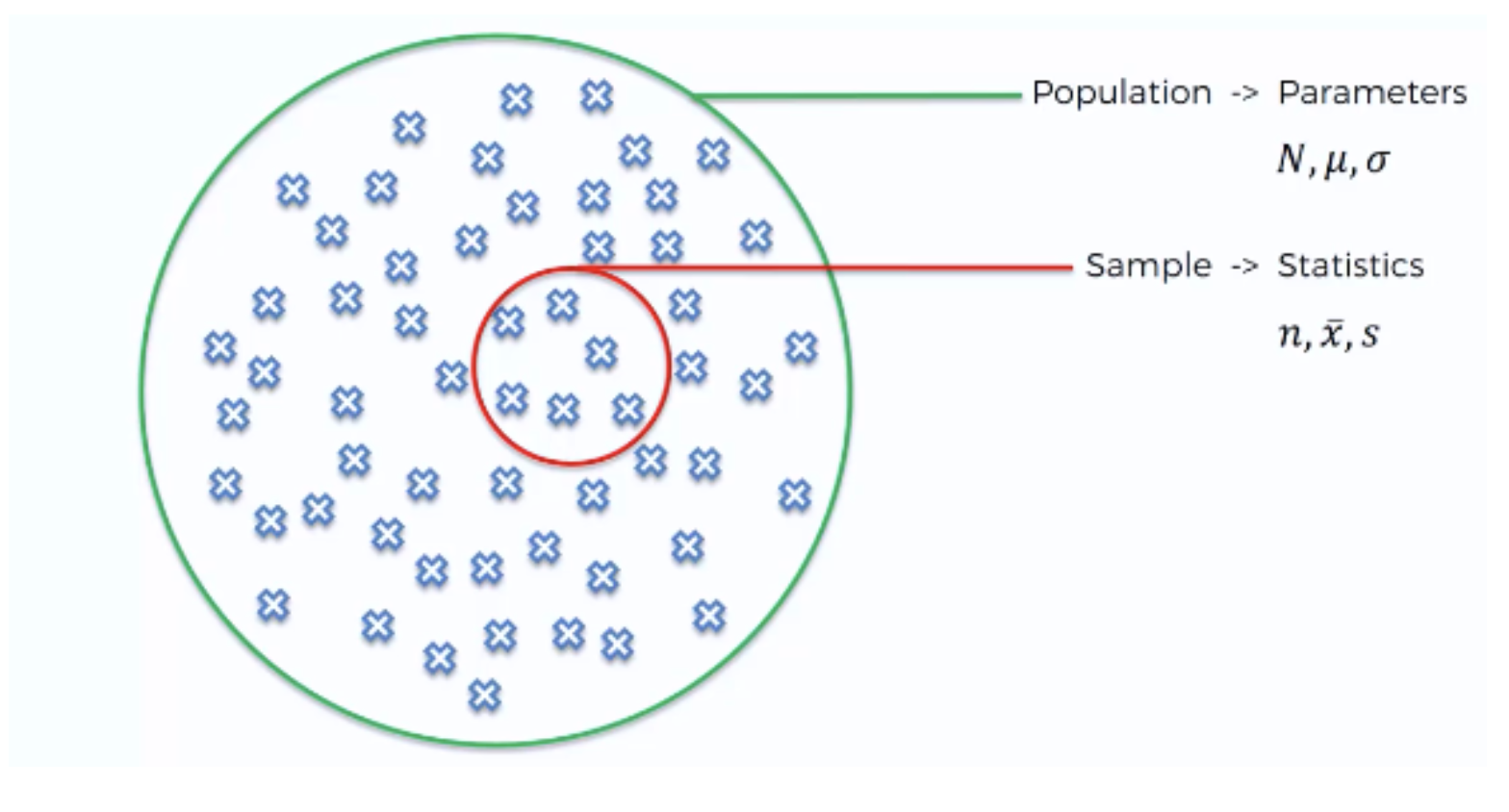Chapter 15: Confidence intervals
STAT 1010 - Fall 2022
Learning outcomes
- Building confidence intervals for the population proportion
- Building confidence intervals for the population mean
- Understanding the \(t\) distributions
- Interpreting confidence intervals
- Understand the margin of error and how to use it to compute sample sizes
Revision

Confidence interval for proportion
- What percent of customers are pleased with your service?
- What percent of customers will refinance their loans?
- What percentage of employees are in favor of a uniform change?
- What percentage of voters will vote for Fetterman?
Variability
- dependent on \(p\) - fatter in middle, skinnier near 0 and 1
- dependent on \(n\), number of samples, bigger sample, less variability
Variability - math
\[ \hat{p} \sim N(\mu = p, \sigma^2 = \frac{p(1-p)}{n}) \]
- numerator of the variance is similar to that of a Binomial distribution
- as sample size increases, variance decreases
CI - math
\[\hat{p} \pm z_{\alpha/2} \cdot \sqrt{\hat{p}(1-\hat{p})/n} \] For \(95\%\) CI, \(z_{\alpha/2} = 1.96\)
As confidence level increases, interval widens
In R: qnorm(0.025)
Assumptions
- SRS condition The observed sample is SRS from the appropriate population. If population is finite, less than 10% of total population
- Sample size condition (for proportion) both \(n\hat{p}\) and \(n(1-\hat{p})\) are larger than 10.
Example 1
Let \(\hat{p}= 0.14\) and \(n = 350\), find a \(95\%\) CI for the proportion
\(\begin{aligned} se(\hat{p}) &= \sqrt{\frac{\hat{p}(1-\hat{p})}{n}} &= \sqrt{\frac{0.14(1-0.14)}{350}}\end{aligned} \approx 0.0185\)
lower value: \(\hat{p} - 1.96 \cdot 0.0185 \approx 0.10374\)
upper value: \(\hat{p} + 1.96 \cdot 0.0185 \approx 0.17626\)
Example 2
An auditor checks a sample of 225 randomly chosen transactions from among the thousands processed in an office. Thirty-five contains errors in crediting or debiting the appropriate account
a. Does this situation meet the conditions required for a \(z\)-interval for the proportion?
b. Find the \(95\%\) confidence interval for \(p\), the proportion of all transactions processed in the this office that have these errors.
c. Managers claim that the proportion of errors is about \(10\%\). Does that seem reasonable?
Example 2 - solns
yes, \(\hat{p} = 35/225 \approx 0.156\) so \(n\hat{p}, n(1-\hat{p})> 10\) and we assume sampled \(<10\%\)
\(\begin{aligned} \hat{p} \pm z_{\alpha/2} \cdot \sqrt{\hat{p}(1-\hat{p})/n} &= 0.156 \pm 1.96 \sqrt{0.156(1-0.156)/225}\\ &= 0.156 \pm 1.96 \cdot 0.0242 \\ &= 0.156 \pm 0.047\\ & [0.109, 0.203]\end{aligned}\)
No \(10\%\) is too low, with \(95\%\) confidence it is higher
Confidence interval for mean
- Average weight for filled ice cream containers
- Average purchases from a website in US$
Variability
- standard deviation of distribution
- higher sd -> wider CI
- sample size
- smaller sample size -> wider CI
CI - mean
\[\bar{x} \pm t_{\alpha/2, n-1} \cdot \frac{s}{\sqrt{n}} \]
T - distribution
- \(Z = \frac{X-\mu_X}{\sigma_X}\)
- \(\bar{X} \sim N(\mu = \mu\_X, \sigma^2 = \frac{\sigma_X^2}{n})\)
- \(T_{n-1} = \frac{\bar{X}-\mu_X}{S/\sqrt{n}}\)
- \(t\) distribution has more density in the tails to account for smaller sample sizes
Variability
- dependent on \(confidence \text{ }level\) - as confidence level increases so does the width of the interval
- dependent on \(n\), number of samples, bigger sample, less variability
Assumptions
- SRS condition The observed sample is SRS from the appropriate population. If population is finite, less than 10% of total population
- Sample size condition the sample size is larger than 10 times the absolute value of the kurtosis, \(n>10|K_4|\).
Example 1
Let \(\bar{x}= \$3285\), \(n = 150\), and \(s = \$238\) find a \(95\%\) CI for the mean
\(\begin{aligned} se(\bar{x}) &= s/\sqrt{n} &= 238/\sqrt{150}\end{aligned} \approx 19.43262\)
qt(.025, df = 149)\(\approx -1.976\)lower value: \(3285 - 1.976 \cdot 19.43262 \approx \$3,320\)
upper value: \(3285 + 1.976 \cdot 19.43262 \approx \$3,247\)
3285 + qt(.025, df = 149)* 238/sqrt(150)
Example 2
Office administrators claim that the average amount on a purchase order is $6,000. A SRS of 49 purchase orders averages \(\bar{x} = \$4,200\) with \(s = \$3,500\).
- What is the relevant sampling distribution?
- Find the 95% confidence interval for \(\mu\), the mean of purchase orders handled by this office during the sampling period.
- Do you think the administrators claim is reasonable?
Example 2 - solns
\(N(\mu, \sigma^2/49)\)
\[\begin{aligned} 4200 \pm 2.01 \cdot 3500/\sqrt{49} &= 4200 \pm 2.01 \cdot 500 \\ &= 4200 \pm -1005.317 \\ &\approx [3195, 5205]\end{aligned}\]
No \(\$6,00\) is way above the \(95\%\) confidence interval
Interpreting CI
“We can be 95% confident that the average purchase order handled by this office lies between $3195 and $5205.”
Manipulating CI
In example from means. How could we update the CI if we know we had 10 offices with similar purchase patterns.
If \([L \text{ to } U]\) is a \(100(1 – \alpha)%\) confidence interval for \(\mu\)
then \([c \cdot L \text{ to } c \cdot U]\) is a \(100 (1 – \alpha)%\) confidence interval for \(c \cdot \mu\)
and \([c + L \text{ to } c + U]\) is a \(100(1 – \alpha)%\) confidence interval for \(c + \mu\).
Example 2 - solns
\(10 \cdot [3195, 5205] = [31950, 52050]\)
Margin of error
\[\bar{x} \pm \frac{2s}{\sqrt{n}} \]
- Margin of error = \(\frac{2s}{\sqrt{n}}\)
Sample size - mean
\[n = \frac{4s^2}{\text{(Margin of error)}^2} \]
- For \(p\) use \(p = 0.5\) for biggest variance
Your turn
Click here or the qr code below
